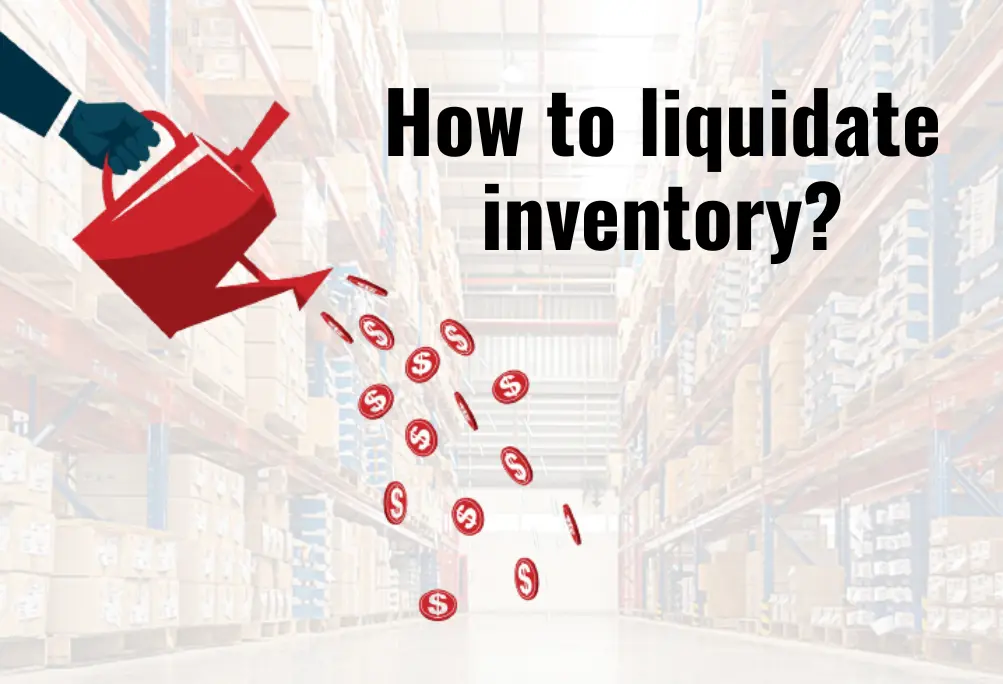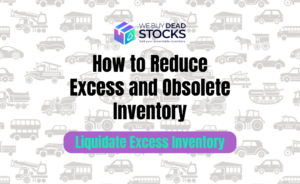The procedure of closing a business is simple. The firm informs its workers, suppliers, lenders, and customers that it is shutting down. It pays its taxes and follows through on its contractual duties. It liquidates its inventory and other assets by selling them rapidly, sometimes for less than the initial purchase price.
Let’s check out what inventory liquidating is and how you can liquidate your inventory.
What is inventory liquidation?
Inventory management is difficult, and it is occasionally a blend of science and art. Excessive inventory, retained stock, or deadstock on your balance sheet might be a major issue for investors if you’re a retailer wishing to invest.
When it comes to liquidating inventory, a company has various alternatives. It can offer its products through the same distribution methods it has always used, at prices so cheap that buyers can’t refuse them. The corporation may generate more revenue for its stock with this approach, but the items may take longer to sell and take payment. It can also sell its whole inventory to a liquidator, who might just pay a reduced rate for the products.
How to liquidate inventory?
Remarketing
Remarketing things that have been taking up space unnecessarily for a long time is an excellent strategy to get rid of obsolete merchandise.
A product may be remarketed with little difficulty. This may be accomplished by integrating modest adjustments or by utilizing excellent marketing tactics such as leveraging photographs to advertise items on your social media platform.
When it comes to slow-moving or outdated goods, try to revitalize your marketing and merchandising efforts.
You may try repositioning them in your store. Place them in a new part of the store or rearrange their shelf configurations.
Discounts/Sales
Clearance sales are among the most effective inventory clearance methods for stocked items.
Out-of-date products can be advertised at maximum discounts beginning at 40% and progressively increasing to 50% – 80% to entice consumers.
Customers will be considerably more eager to buy things on sale from your business at a reduced price since they are anticipating it. When you sell your inventory items at clearance pricing, you may clear the stock while also making a good profit.
Make sure you plan and execute your sales events effectively. Doing them too frequently might cause the events to lose their attraction and encourage clients to wait till you discount your things before purchasing from you.
Return to supplier
Returning goods to the source is another option to liquidate them. This is frequently done when a business is shutting down or when a store will no longer sell a certain product. This might be a smart approach to get away from inventory that isn’t selling well, but be certain the supplier accepts the return.
Consider BOGO strategy
A multi-buy offer is a form of sales promotion in which buyers can acquire things at a reduced price if they purchase a specified quantity or volume. BOGO promotions and offers such as “Buy 3 get 1 free” are glaring examples of multi-buy deals.
This sort of offer may be quite beneficial in moving surplus inventory, especially if you offer staples (such as toiletries or home necessities) or products that are bought in sets (like clothes).
Donate
Excess inventory may be donated to charity by retailers, which is a terrific method to help those in need. This can be accomplished through online contribution portals or by personally contacting a local charity.
Furthermore, shops can provide discounts to clients who make charitable donations. This is an excellent method to assist both the client and the charity.
Consider liquidation companies
Additionally, you can use a liquidation firm to simply sell your excess inventory to groups that specialise in removing stock from merchants’ hands.
Please keep in mind that these corporations may cherry-pick goods and purchase merchandise at a much cheaper rate, so you are unlikely to benefit from this strategy. However, you will be able to obtain space and funds for your firm.
Make bundles or packages
Combining items is another technique to sell inventory that has to be liquidated. You may combine popular products with less popular things to urge buyers to choose the bundle over the normal items, or you can combine limited-edition items with regular items for seasonal sales.
You may even provide it as a freebie with some high-profit goods. That is where your visual merchandiser may utilise his or her expertise to save the day while also bringing some revenues to the company. Assess if the new package is part of a strategy and not an outlier or an afterthought. The greater the value, excitement, or value a customer sees in a product, the more likely they are to deal with their hard-earned money.
Why should you liquidate your inventory?
The major motivation for acquiring too many things is frequently an optimistic and forward-thinking attitude, although unanticipated occurrences or technological advancements may also be reasons to overstock.
Excess inventory disposal is a vital step in maximizing earnings above any additional expenditure of resources that would result in a loss.
To keep the problem from harming your year-end balance sheet, check and dispose of surplus inventory quarterly during the year, since stockpiling merely reduces its appreciating value and adds to the problems by taking up space and drawing losses.
Items that are not in great demand are the prime choices for inventory liquidation tactics. Inventory liquidation strategies will create returns on investments to the level where losses are minimized.
Final Thoughts
We believe this article has shown you that you don’t have to be concerned about excess inventory. Excessive stock, when managed right, may actually increase sales, customer satisfaction, and tax possibilities for your company.





